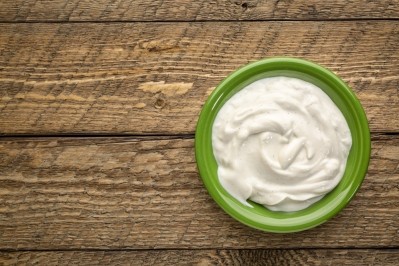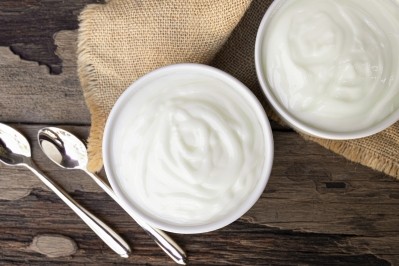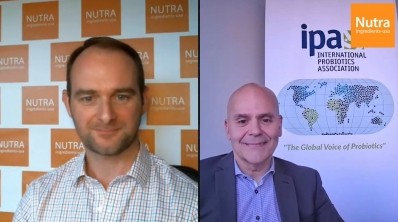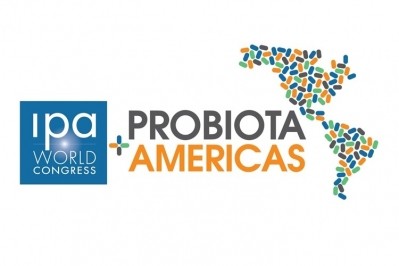30 things we learned at the 2019 IPA DC Workshop

The market & the consumers
1. The global probiotic supplements market has grown US$ 396.9 million since 2018, and if now worth $6.07 billion, according to data from Euromonitor International presented by George Paraskevakos, IPA’s executive director. The CAGR for the next five years (2019-2024) is predicted to be 4%.
2. The highest growth market for probiotic supplements is the UK, which is expanding by 18% year-on-year, followed by Malaysia (14%), and Vietnam (12%). China, which represents 55% of the APAC market, is worth $620 million and is growing at 11% year-on-year.
3. Probiotics supplements growth in the US has slowed (0.9% year-on-year), but this still represents one-third of the global consumers of these products, said Paraskevakos.
4. On the other hand, the global functional/fortified probiotic yogurt category is valued at $31.1 billion, and APAC region leads the way in growth and market size for this category, he added (based on Euromonitor data).
5. According to consumer data commissioned by the IPA, there are 53 million consumers of probiotics in the US, up from 33 million in 2017. Of these 53 million, 58% consume yogurts and 42% of them consume supplements.
6. Since 2017, there has been a shift in the consumer demographics, with Millennials and more men coming into the space, said Paraskevakos.
Product labels
7. Paraskevakos was followed by Dr Dan Merenstein from Georgetown University Medical Center, who discussed findings from recent study that found that about 60% of probiotic supplements in the US may lack sufficient information on their labels to allow consumers to make informed decisions, despite all the products being labeled in compliance with FDA regulations (for more on this study, please click HERE).
8. The study focused on 93 dietary supplements labeled as probiotics that were purchased at retail in the Washington D.C. area. Dr Merenstein revealed that another paper will be coming soon that focuses on probiotic dairy products.
Adequate intake for dietary microbes
9. Mary Ellen Sanders, PhD, Executive Science Officer of the International Scientific Association for Probiotics and Prebiotics (ISAPP) and principal of Dairy and Food Culture Technologies, said that efforts to establish an adequate intake for dietary microbes should take a lesson from the development of the adequate intake (AI) for fiber. (ISAPP convened a discussion group during its annual meeting in Antwerp earlier this year to explore the idea.)
10. The AI for fiber was base on epidemiological evidence that fiber protects against CVD. Could this approach be harnessed for probiotics?
11. Calls for adequate intakes of dietary microbes have been growing for several years, with Prof Gregor Reid, Chair, Canadian Centre for Human Microbiome and Probiotics at the Lawson Research Institute, stating in 2017 that fermented foods should be classified as a fifth food group in Canada’s food guide (in addition of meat, vegetables, dairy and grains).
DSHEA and the NDI question
12. Sibyl Swift, PhD, from the Office of Dietary Supplement Programs discussed the FDA’s perspectives on DSHEA, noting that several efforts to modernize the 25-year old law have been announced this year, including the Dietary Supplement Ingredient Advisory (a rapid response tool to alert the public), and the Botanical Safety Consortium. When quizzed by IPA’s Paraskevakos on comments about establishing a Probiotics Safety Consortium, Dr Swift noted that those calls had been heard.
13. Dr Swift also noted that mandatory listing of dietary supplement products would be “game-changing”.
14. On the NDI (New Dietary Ingredient) issue and the calls to allow Master Files, Dr Swift noted, “The Agency has already put out positions relating to Master Files. There are numerous references in 2016 revised draft guidance referring to Master Files.”
15. Corey Hilmas, MD, PhD, Chief Regulatory Officer with KGK Science, noted that there is no consensus among the industry trade associations as to what Master File means or how it would be implemented.
16. Dr Hilmas, who was at the FDA when the first draft guidance was issued in 2011, added: “I don’t think they’re going to do another redraft. I think a finalized guidance is coming… probably within 12 months.”
17. Many stakeholders have commented over the years that players are sidestepping the NDI notification route and taking their ingredients via the GRAS (generally recognized as safe) route for food ingredients. Solange Henoud, the global regulatory affairs director at Lallemand and chair of the IPA regulatory affairs committee, said IPA’s position is that companies should not follow the GRAS route for dietary supplement ingredients.
A new IPA probiotic product certification program
18. Mehgan Styke, Business Development Manager at Eurofins and chair of the IPA’s recently formed technology and standards committee, explained that the new committee aims to support IPA by identifying and evaluating relevant technologies and standards; leading to development and dissemination of guidance, best practices, recommendations and standards supporting the safety and quality of probiotic ingredients, blends, and finished products as they relate to probiotic manufacturing, quality control, research, and microbial identification.
19. Via this committee’s work, and complementing work done by the organization’s manufacturing committee, an IPA probiotic product certification program could be coming within two years, she said.
Taxonomy changes to the genus Lactobacillus
20. Big changes are coming to how many of the most popular probiotics are classified. The Lactobacillus genus is extremely diverse and includes 251 species. This includes commercially important strains such as casei, paracasei, plantarum, salivarius, reuteri, and rhamnosus, but genetics have shown that these are no longer Lactobacillus.
Dr Michael Ganzle from the University of Alberta, who is co-author of an upcoming paper on Lactobacillus taxonomy, which will appear in the International Journal of Systematic and Evolutionary Microbiology (IJSEM), explained that species currently assigned to Lactobacillaceae are assigned to 26 genera: Lactobacillus, Pediococcus, Paralactobacillus and 23 new genera. Names of the new genera with commercially relevant strains will start with L, and most will retain a resemblance of Lactobacillus. No changes to species or strains will occur, just the genus.
21. Important to note from a labeling perspective is that most new genus names are 4-7 letters longer than the old ones, so brands will have to consider this on Supplement Facts panels.
22. Michael Steller from Health Canada noted that the taxonomic changes have implications for regulators: Changes will need to be made to the NHPID (Natural Health Product Ingredient Database) and the probiotic monograph. “Industry can help with prioritizing this issue. Once the names are decided upon, requests to have the NHPID (ingredient database) updated with the name changes would be helpful,” he said.
23. Health Canada will expect that changes to labels will occur within three years on the monograph change.
24. In the future, there will also likely be a need to split apart the Bifidobacteria genus, he added.
25. What’s clear is that a substantial communication challenge looms, and Nina Vinot from Probiotical noted that the communication will need to be internal (updating technical documents, etc), external to customers/ brands, as well as the end consumers, and communication to the academic, scientific & medical communities, with impacts on scientific publishing and patents will need to be filed with new names.
26. The IPA has produced an infographic on taxonomic changes to help prepare members, said Dr Jessica Terhaar (née Younes), IPA’s director of scientific affairs.
27. Ivan Wasserman, managing partner of Amin Talati Wasserman, likened the impending changes to Y2K. “I know there’s a lot of panic, but you have a lot of time to prepare. It’s going to be very important to communicate with your customers and with healthcare providers. Being able to put “formerly known as…” will help (just don’t do it on your supplements fact panel).”
A new academic degree program for industry executives
28. Also discussed during the IPA workshop was the launch of a new Master of Science in Nutrition Business Leadership (MSNBL) by the Southwestern College of Naturopathic Medicine (SCNM), described as “the new onboarding for the natural products industry”. IPA is a partner on the program.
29. The program, which will launch in 2020, aims to help developed industry professionals with evidence-based nutrition expertise, regulatory knowledge, and business acumen to lead organizations, explained Gena Kadar, Dean, School of Nutrition at SCNM.
30. The 15-month, online program aims to: Train future leaders to improve quality and integrity of global industry; Inform the development of safe, responsible, evidence-based & efficacious products; and improve global health and wellbeing.
















